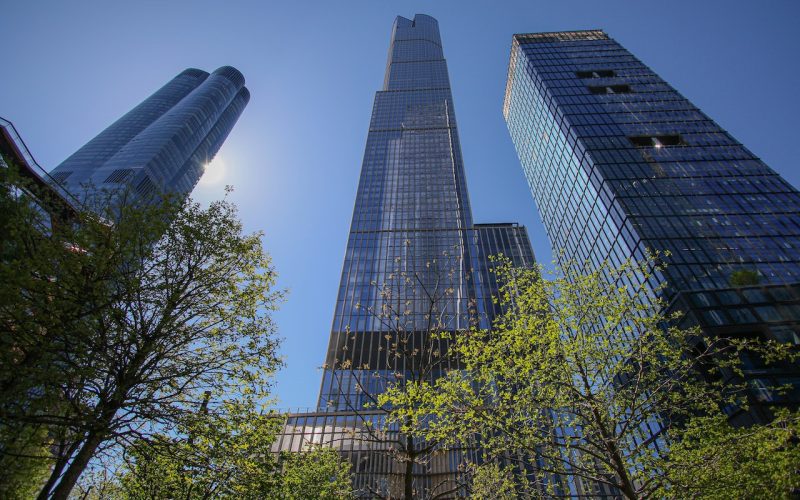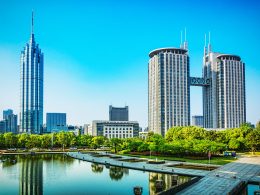Resilience in Real Estate: COVID-19’s Impact and Recovery
The COVID-19 pandemic posed unprecedented challenges to the real estate sector, but it also unveiled the industry’s remarkable resilience. In this article, we delve into how the real estate sector navigated these challenges, adapted, and embarked on a path to recovery.
Pivoting to Remote Work
The surge in remote work demanded swift adaptation from the real estate sector. Office spaces transformed to accommodate hybrid work models, focusing on flexibility and technology integration. The traditional notion of a fixed office gave way to more dynamic co-working spaces and flexible lease agreements, becoming instrumental in meeting the evolving needs of businesses. Shorter lease terms and flexible agreements became the norm, providing businesses with the agility to respond to the rapidly changing landscape.
Adapting Retail and Hospitality
The pandemic expedited the shift to e-commerce, compelling the real estate sector to reinvent the retail and hospitality landscape. Vacant retail spaces were converted into efficient fulfillment centers for online orders. The industry embraced the creation of contactless customer experiences, such as curbside pickup and virtual shopping, which became essential for business continuity. The mall experience evolved, placing a stronger emphasis on experiential retail, integrating entertainment and dining options to attract visitors.
Embracing Health and Sustainability
Health and sustainability took center stage in the design and operation of real estate properties. In response, the sector introduced advanced air filtration systems, enhancing indoor air quality. Wellness-focused designs were implemented to create spaces prioritizing the well-being of occupants. Sustainable and green building practices gained prominence, aligning with the growing eco-consciousness of tenants. Real estate aimed not only to provide safe and secure spaces but also to contribute to a sustainable and healthy environment.
Table 1: Real Estate Resilience
| Resilience Area | Key Highlights |
|---|---|
| Pivoting to Remote Work | Hybrid workspaces, flexible leases. |
| Adapting Retail | Fulfillment centers, contactless experiences. |
| Embracing Health | Advanced air filtration, wellness designs. |

Flexibility in Lease Agreements
In light of the uncertain times, both landlords and tenants redefined lease agreements to offer flexibility. Shorter lease terms, rent adjustments, and provisions for unforeseen disruptions became common features in commercial leases. These changes allowed businesses to navigate the uncertain times with greater ease, adapting their real estate commitments as needed.
Investment in Technology
The real estate sector embraced technology as a means to enhance safety, efficiency, and the overall tenant experience. The adoption of PropTech (property technology) surged, introducing touchless access systems that allowed occupants to navigate properties without physical contact. Smart building management systems optimized energy usage and provided real-time data for better decision-making. Data analytics played a crucial role in monitoring building performance, ensuring a safe and productive environment.
Opportunity in Undervalued Assets
Despite the challenging circumstances, savvy investors identified growth opportunities in undervalued assets. By conducting thorough analyses and adopting a long-term vision, they recognized properties with significant growth potential. This strategic investment approach proved successful for those willing to venture into a market perceived as uncertain.
Table 2: Recovery Strategies
| Strategy Area | Key Strategies |
|---|---|
| Lease Agreement Flexibility | Shorter terms, rent adjustments. |
| Technology Integration | PropTech, smart building management. |
| Undervalued Asset Investment | Identifying growth potential. |
Preparing for the Hybrid Future
As the real estate sector emerged from the crucible of the covid, it did so with valuable lessons learned and innovative solutions embraced. Businesses are now preparing for a hybrid future that combines remote work and in-person collaboration. The sector stands well-prepared to provide dynamic, resilient, and adaptable spaces that can cater to the evolving needs of businesses.
Conclusion
The COVID-19 crisis served as a powerful catalyst for change in the real estate sector. Its ability to adapt swiftly, innovate under pressure, and transform to meet the needs of a rapidly changing world demonstrated the resilience and adaptability of the industry. Through flexibility, technology integration, and a commitment to health and sustainability, the real estate sector not only weathered the storm but also positioned itself for a promising future, ensuring its continued relevance in the dynamic and evolving business landscape.












